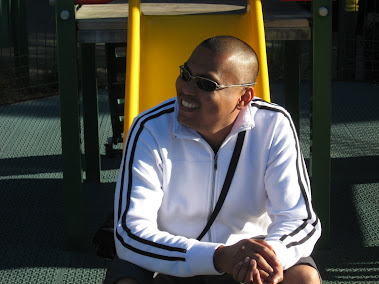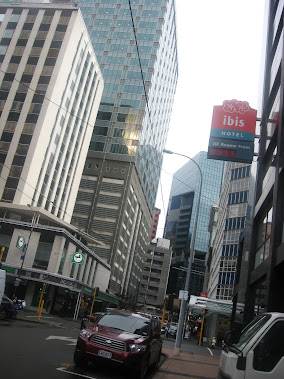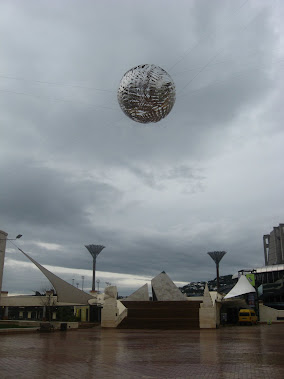
This term my daughter’s school has been focussing on cultural celebrations. I liked the idea of that so much, I volunteered to come in and talk about the Pahiyas Festival, which is celebrated every 15th of May in the province of Lucban, Quezon in the Philippines. My own grandmother is from Lucban (home to the most amazing sausage – Lucban Longganisa oh my god yum yum why can’t we get it here in New Zealand waaaah!!) and so I have had the good fortune to come along at least once to this Festival, albeit many years ago.
Keeping in mind I would be speaking to 5 and 6 year olds, I stuck to the most basic facts. I created a beautiful (if i do say so myself) powerpoint presentation outlining the:
- when and where. (See above)
- the why. The festival honours St. Isidore the Labourer who is the Patron Saint of Farmers; and is a way for the townspeople to give thanks for a good harvest; as well as entreat him (and God) for another good year to come.
- the how. The townsfolk decorate their houses with fruits, vegetables, flowers, other agricultural products and “kiping” which are very colourful wafers made from rice. A procession, often bearing a likness of St. Isidore, wends its way through the town streets where each house is blessed in passing by the local priest. At the end, the best decorated house wins a prize.
- The meaning of Pahiyas - two things: “jewel” and “precious offering.”


Making the Kiping is a labour-intensive and fascinating process. A special grain of rice must be used, and while the Kiping is made, complete silence must be maintained lest the rice wafers crack (apparently this is a long-held superstition – and one which is completely adhered to!)
Kiping can actually be eaten – some of it is given away to revelers and tourists and the rest is taken into the households for consumption.
It was so lovely to see the children in the class very interested – the colourful pictures made sure of that – and they had so many questions on not just the Pahiyas festival itself, but about the Philippines in general. Here are some samples of curiousity at its most eager and finest:
- What time does school start in the Philippines (gosh from memory, we had flag ceremony at 7:30am followed by morning exercise — to which P’s teacher gasped and said “that’s so early! school here doesn’t start until 8:55!” Imagine if I went on to tell her that in my grade school years I woke at 4:15 every freakin’ morning for six years because school was THAT far away – and on the school bus, no less!)
- What’s the time difference? (the Philippines is 5 hours behind NZ during DST, 4 hours without it)
- What languages are spoken in the Philippines? (English and Tagalog primarily, although there are several dialects spread throughout the 7,100 islands – to which, again, Teacher Katie said “7,000! (To class:) Do you know how many that is? That’s a lot! I didn’t know that! Wow!”
- Are you Catholic??? (it was just waaay easier to say yes, as the school is a Catholic one and i’m not sure the definition of a “lapsed catholic” would go down well, if at all, with said teacher and her little students!)
- Do they celebrate mother’s day in the Philippines? Grandparents’ Day? Fathers’ Day (yes to all of the above – i think?? Does the Philippines have Grandparents’ day? If not, I reckon we should write Gloria, aka President of the Republic, a letter!!)
- Has Pilar ever been to Pahiyas? (sadly, no, but we did go to Liliw once – I think that’s a nearby province? to buy shoes!!!)
- Why do they eat plants from the ground? (which really puzzled me, as they eat kumara – also known as sweet potato — which of course, is a root vegetable, as well as carrots, potatoes, taro, etc. etc. Hmm. perhaps this little boy’s parents may need to explain where the food from the grocery comes from…)
There were more questions (for the life of me I can’t recall them all), and the presentation took longer than expected, but that was all good by me. The sparks of interest were extremely gratifying, and I loved that I could share a little bit of my homeland with children from my adopted country.
When my husband and I took the leap and decided to start a new life here in NZ, I promised myself my kids would always know where we came from. In the beginning (and it still feels that way sometimes), it was like limbo – trying to adapt to a new culture while still holding onto our own seemed a balancing act that could go waaaaay off kilter at the slightest provocation. Everyday was (in fact, still is!) East vs. West, down under.
My son, who was born here to parents of permanent residency status, is a Kiwi. He’s got the citizenship, the blue passport, the whole nine yards. It’s in his birth certificate – Citizenship: New Zealander. I can’t get my head around the concept. Don’t ask me why. I know there is no reason he can’t be both Filipino and NZer, and I suppose I will get used to the idea in time (probably in 2012, when the rest of the family obtain citizenship, and have lived here long enough to become Kiwi-nised ourselves.)
The fashionable term in use at the moment to call the likes of us is Kiwinoy. I suppose it’s not very, um, sexy? but hey, it’ll do. I am glad to be here. I’m just making absolutely sure that – for me and my little family, “here” also includes quite a little bit of “there” . Which is why I volunteer at my child’s school and make the time to create powerpoint presentations and teach Tagalog classes. NZ is our new home; but home is also where the heart is, and I can’t deny a part of my heart will always be in Manila.
(And speaking of Manila… hopefully we’ll be there Dec. 2010!!. Thanks to Tita Bong G. for allowing me to re-post pictures from her trip to this year’s Pahiyas Festival.)











0 comments:
Post a Comment